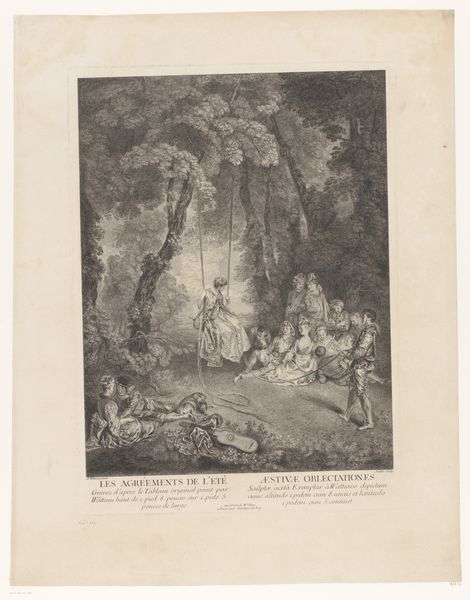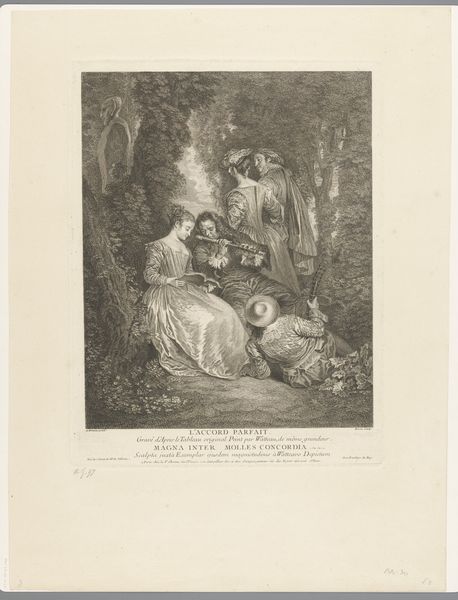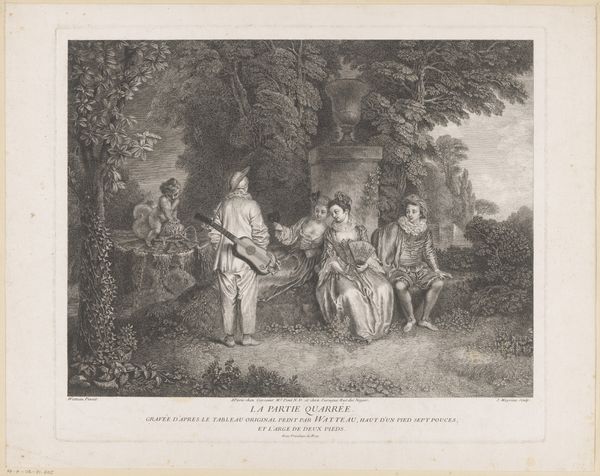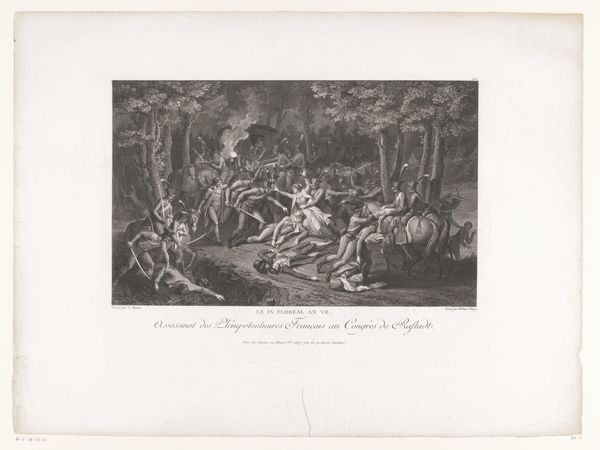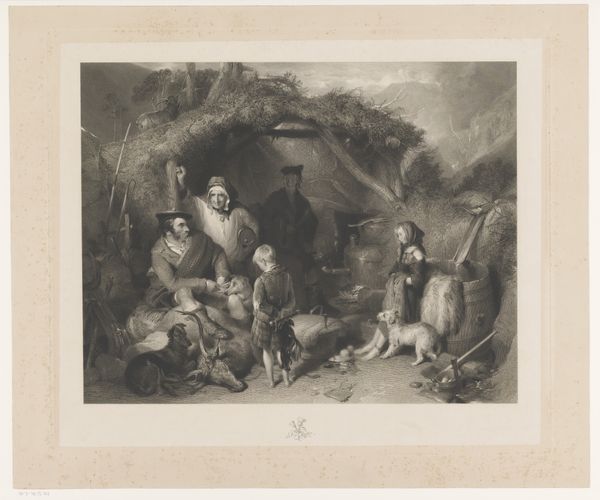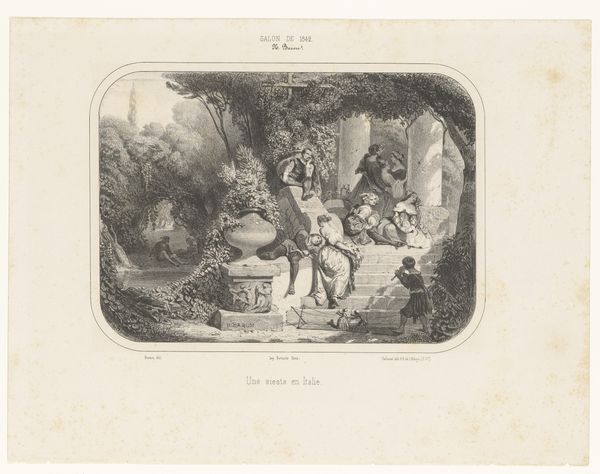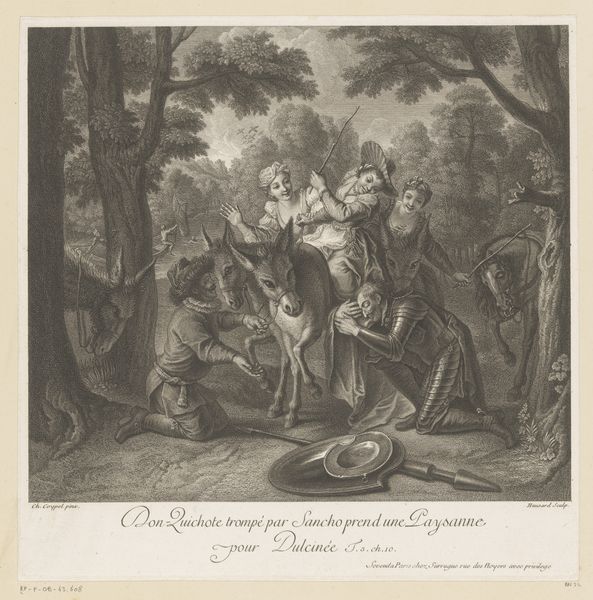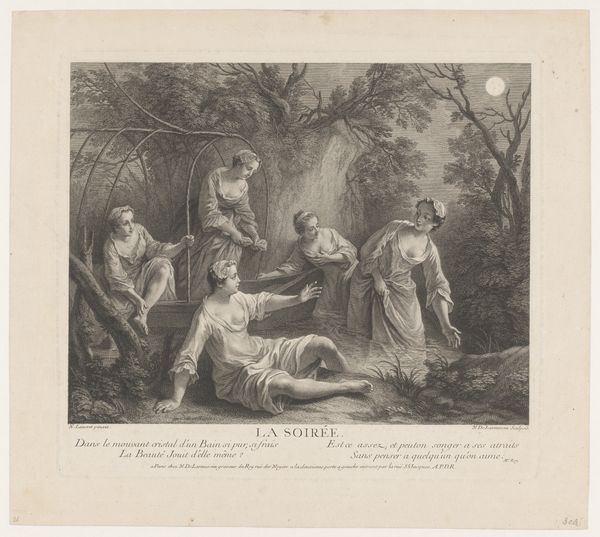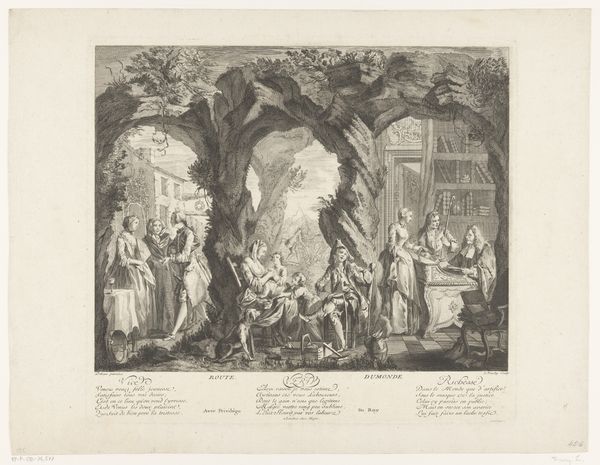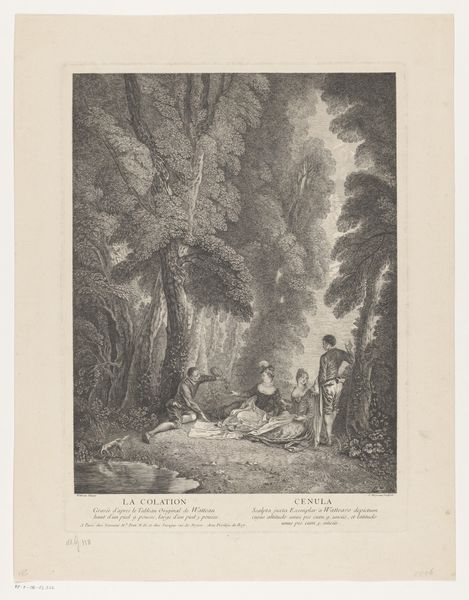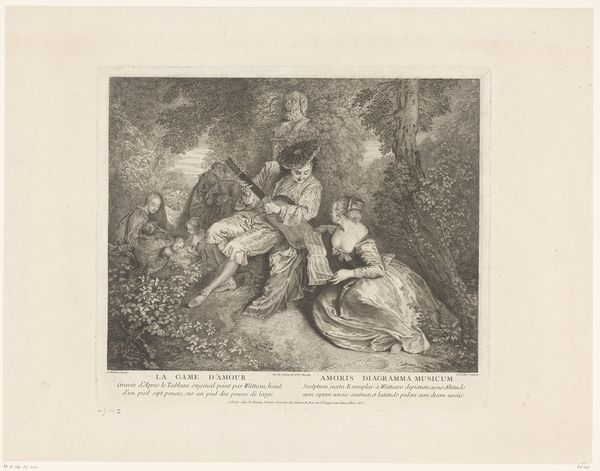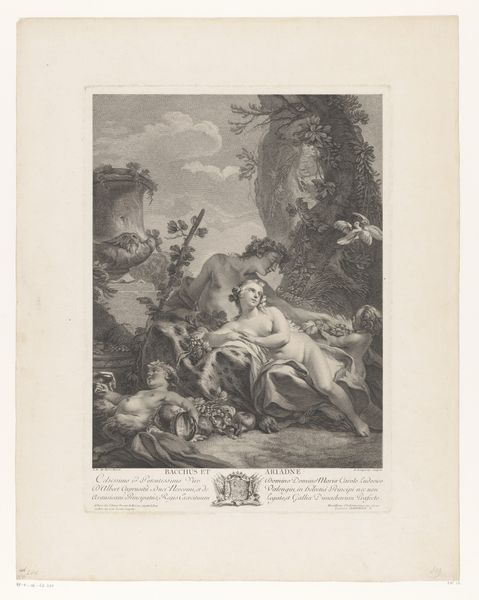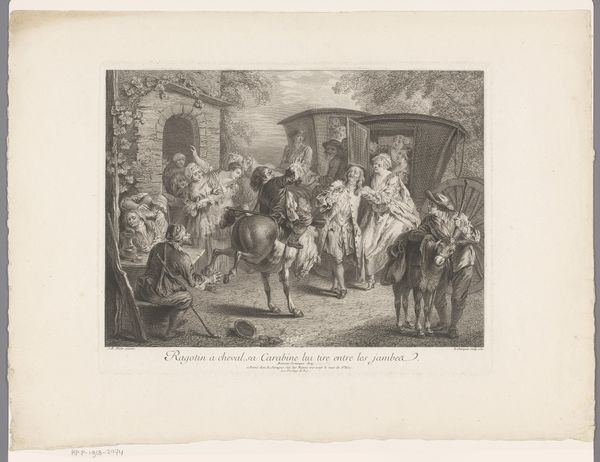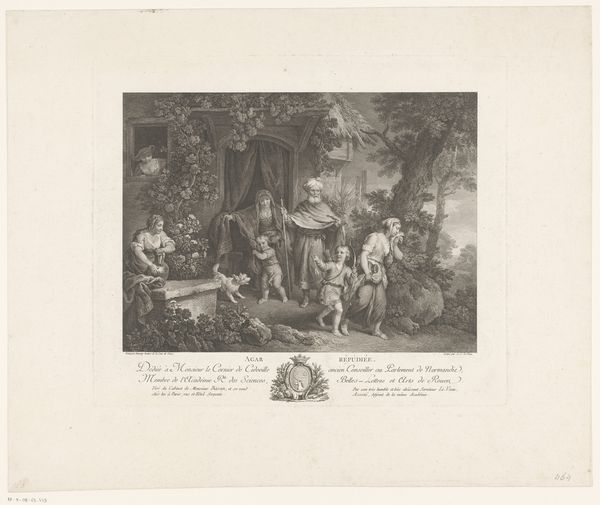
Dimensions: height 428 mm, width 532 mm
Copyright: Rijks Museum: Open Domain
Curator: Let’s consider this engraving, "Cyrus wordt gevonden," or "The Finding of Cyrus," created in 1767 by John Boydell. What strikes you first about its composition? Editor: It’s predominantly grayscale. A sort of eerie peace settles on the whole scene, despite the implication of discovery and rescue. A very Baroque grayscale... Curator: The story goes that Cyrus, the future king of Persia, was ordered to be killed as an infant but was instead saved by a shepherd and his wife. Look at how Boydell portrays this rescue—note how it evokes themes of found identity and manipulated fate, common threads when power and gender intersect. Editor: The textural contrast is fascinating. Smooth skin against the rough fleece of the sheep. Sharp lines defining the shepherd’s form versus the almost misty rendering of the background trees. How does the artist manage to create such depth with just line work? Curator: That contrast reinforces the narrative. The softness around the child symbolizes vulnerability, contrasting the rough reality the shepherds represent, and, culturally speaking, their lower social standing, almost a visual class commentary. It speaks to the broader dynamics of power, nurture, and class. Editor: And look at the use of light and shadow! See how Boydell employs it to guide our eye? From the almost angelic statue, to the child in light at center frame, leading us across to the observing couple with their sheep in tow. There’s almost a deliberately performative quality here... staged perhaps? Curator: The scene can be considered theatrical. Consider its baroque and historical-painting leanings. The staged drama invites reflection on who gets to be saved, and the ripple effects of those decisions throughout history. Who has control over one's destiny versus predetermined fate? The choice of such stories in art also reflects a kind of cultural identity at the time. Editor: I appreciate seeing how, from composition to texture, so much thought was given to how light falls across a space... It's really striking, even if one is unfamiliar with the legend it depicts. Curator: Yes, considering art from this lens allows for the interrogation of societal constructs as well as visual ones!
Comments
No comments
Be the first to comment and join the conversation on the ultimate creative platform.
